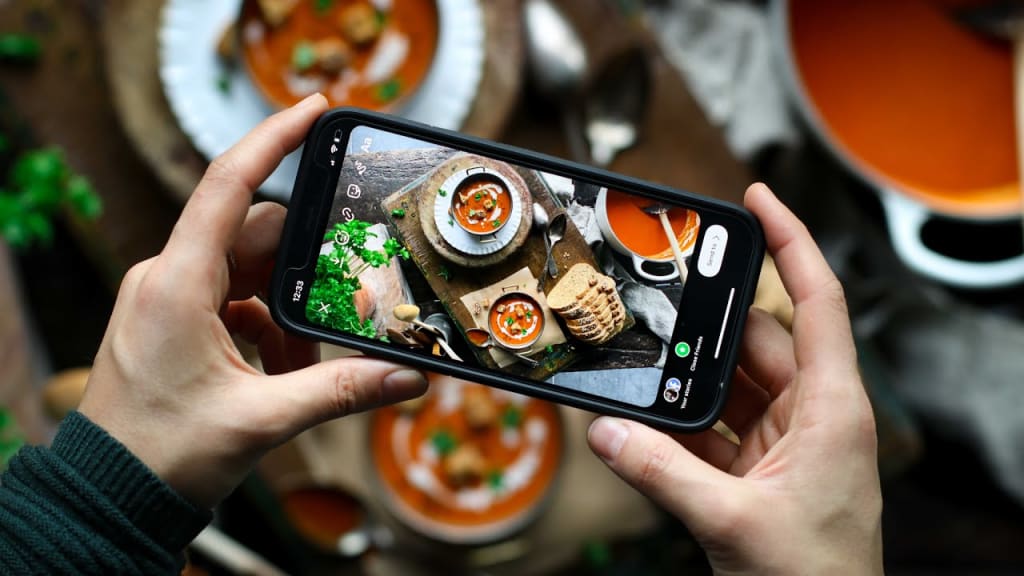The Art of Food Photography
Tips and Tricks for Capturing Delicious Images

In the age of social media and culinary exploration, food photography has become a ubiquitous and powerful form of visual communication. From mouth-watering dishes in cookbooks to tantalizing menus on restaurant websites, captivating food photography has the ability to evoke emotions, spark cravings, and inspire culinary adventures. However, creating stunning food photographs requires more than just a keen eye and a camera. It is an art form that requires careful consideration of composition, lighting, styling, and storytelling.
Plan Your Shot
Before you even pick up your camera, take the time to plan your shot. Consider the message you want to convey through your photograph and the story you want to tell. Think about the mood, the setting, and the props you want to incorporate. Planning ahead will help you visualize the final image and ensure that you have all the necessary elements in place.
Choose the Right Lighting
Lighting is one of the most critical aspects of food photography. Natural light is often the best choice, as it brings out the vibrant colors and textures of the food. Position your subject near a window or shoot outdoors during the golden hour (the hour after sunrise or before sunset) for soft, diffused lighting. Avoid harsh overhead lighting or direct sunlight, as they can create unflattering shadows and highlights.
Master Composition
Composition plays a vital role in food photography. Experiment with different angles, perspectives, and focal points to create visual interest. The rule of thirds is a helpful guideline to follow, where you divide the frame into a 3x3 grid and position your subject along the lines or at the intersections. Additionally, consider the arrangement of the elements within the frame, such as plates, utensils, and garnishes, to create balance and harmony.
Use Props Wisely
Props can enhance the visual appeal of your food photographs and add context to the story. Choose props that complement the food and help tell a cohesive narrative. Experiment with different textures, colors, and materials to create a visually pleasing composition. However, be mindful not to overwhelm the food itself. Remember, the food should always be the star of the photograph.
Play with Depth of Field
Controlling the depth of field can dramatically impact the look and feel of your food photographs. By using a wide aperture (small f-number), you can create a shallow depth of field, where the subject is in sharp focus while the background is blurred. This technique can draw attention to specific details or ingredients in the dish, adding a sense of depth and dimension to the image.
Pay Attention to Styling
Food styling is a crucial aspect of food photography. Pay attention to the arrangement of the food on the plate, ensuring it looks appetizing and inviting. Highlight the natural textures and colors of the ingredients, and use garnishes strategically to add visual interest. Don't be afraid to adjust and rearrange elements to create a more visually appealing composition. Remember, the goal is to make the viewer want to reach into the image and take a bite.
Edit with Care
Post-processing is an essential step in food photography. Use photo editing software to fine-tune the exposure, colors, and sharpness of your images. However, be cautious not to over-edit, as it can result in an unnatural and unappetizing appearance. Aim for a balance between enhancing the natural beauty of the food and maintaining its authenticity.
Experiment and Have Fun
Food photography is an ever-evolving art form, and there are no strict rules to follow. Don't be afraid to experiment with different techniques, angles, and compositions. Embrace your creativity and have fun with the process. The more you practice and explore, the better you will become at capturing those delicious moments.
In conclusion, food photography is a captivating art that requires a combination of technical skill and artistic vision. By carefully considering composition, lighting, styling, and storytelling, you can create mouth-watering images that truly capture the essence of the food. Remember, practice makes perfect, so keep experimenting, learning, and honing your skills. Happy shooting!
About the Creator
Enjoyed the story? Support the Creator.
Subscribe for free to receive all their stories in your feed. You could also pledge your support or give them a one-off tip, letting them know you appreciate their work.





Comments
There are no comments for this story
Be the first to respond and start the conversation.